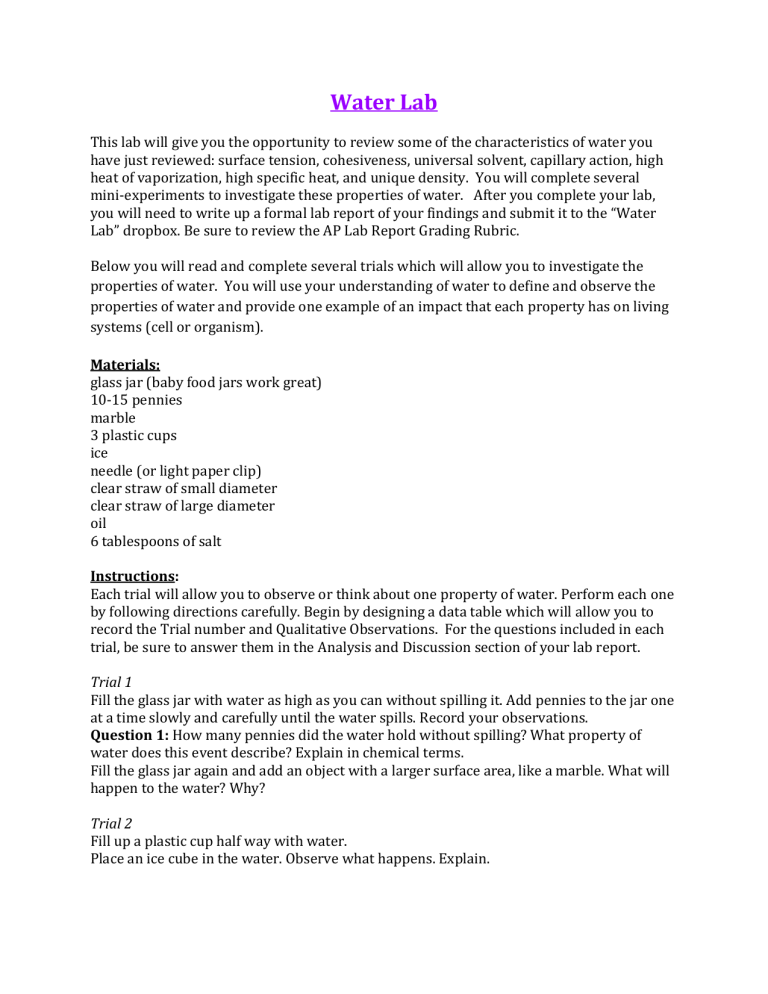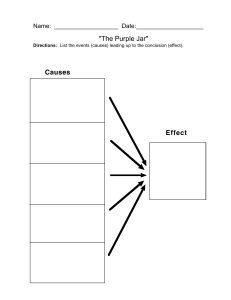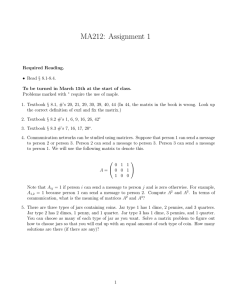Water Properties Lab: Surface Tension, Cohesion, Solvent, More
advertisement

Water Lab This lab will give you the opportunity to review some of the characteristics of water you have just reviewed: surface tension, cohesiveness, universal solvent, capillary action, high heat of vaporization, high specific heat, and unique density. You will complete several mini-experiments to investigate these properties of water. After you complete your lab, you will need to write up a formal lab report of your findings and submit it to the “Water Lab” dropbox. Be sure to review the AP Lab Report Grading Rubric. Below you will read and complete several trials which will allow you to investigate the properties of water. You will use your understanding of water to define and observe the properties of water and provide one example of an impact that each property has on living systems (cell or organism). Materials: glass jar (baby food jars work great) 10-15 pennies marble 3 plastic cups ice needle (or light paper clip) clear straw of small diameter clear straw of large diameter oil 6 tablespoons of salt Instructions: Each trial will allow you to observe or think about one property of water. Perform each one by following directions carefully. Begin by designing a data table which will allow you to record the Trial number and Qualitative Observations. For the questions included in each trial, be sure to answer them in the Analysis and Discussion section of your lab report. Trial 1 Fill the glass jar with water as high as you can without spilling it. Add pennies to the jar one at a time slowly and carefully until the water spills. Record your observations. Question 1: How many pennies did the water hold without spilling? What property of water does this event describe? Explain in chemical terms. Fill the glass jar again and add an object with a larger surface area, like a marble. What will happen to the water? Why? Trial 2 Fill up a plastic cup half way with water. Place an ice cube in the water. Observe what happens. Explain. Question 2: Most substances get continually more dense as their temperature is reduced. Is that the case with water? Identify the property of water, and explain it at the chemical level. Question 3: Does water start to freeze at the top, or at the bottom of a lake? Would life be possible if ponds froze from the bottom to the top? Trial 3 Fill a glass jar to the very top again. Take a needle (or a light paper clip) and very carefully place it on the edge of the jar with half of it on the surface of the water in the container. Gently tap the end of the needle or paper clip to push it out over the opening of the jar. If you do it carefully and gently enough, you can get the needle to float on the surface of the liquid. Question 4: Due to what property of water does this happen? Define the property, and explain it chemically. Give an example of how it can support life. Question 5: How is this property different than in trial 1? Trial 4 Dip clear straw with a small diameter about half way in water. What do you observe? Identify and properly define the property of water that explains this behavior. Would the same thing occur if the tube had a diameter 5 times as large? Try it. Take the clear straw with a large diameter and observe what happens. Question 6: Why will water move upwards in the thin tube but not in the straw? Question 7: Plants depend on this property in order to obtain water. Explain. Trial 5 Use your imagination on this trial. Do not perform this exercise. Only read and think about it. If you place a container of water on a hot stove, you probably have to wait some time for water to boil, since the temperature must reach 100 degrees Celsius in order to boil. Other substances, like acetone, for instance, do not need so much heat before they change state. (USE YOUR IMAGINATION ON THIS, DO NOT BOIL ACETONE OR ANY OTHER FLAMMABLE SUBSTANCE.) This fact gives water a property called high heat of vaporization. Question 8: At the molecular level, explain this need (of water) for so much heat in order to change state. Trial 6 Obtain two plastic cups. Add oil to one of them and water to the other (half way up the cup). Add three tablespoons of salt to each one. Describe what happens. Question 9: Describe the chemical property that gives water this unique ability. When you complete the trials, format your data table, and complete your lab report according to the guidelines of the AP Biology Lab Rubric. Submit your completed lab report to the "Water Lab” dropbox.

